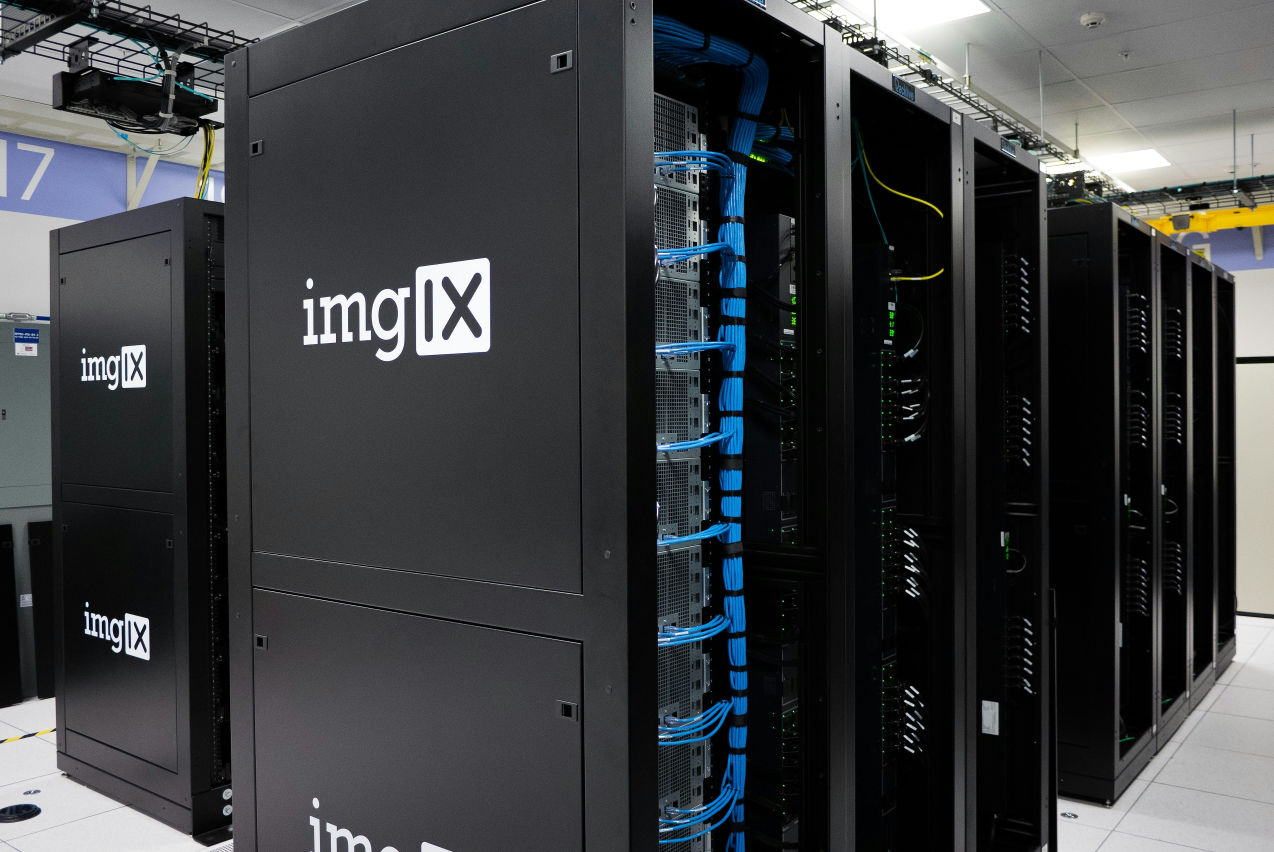Transitioning from Proxy Firewalls to Endpoint Security

Introduction to Legacy and Modern Security Solutions
As the digital landscape evolves, so do the threats that businesses face. This evolution necessitates a shift from traditional security measures to more advanced, comprehensive solutions. Historically, organizations relied on proxy firewalls to safeguard their networks from external threats. These firewalls acted as intermediaries, filtering incoming and outgoing traffic to prevent unauthorized access. However, with the rise of sophisticated cyber threats and the increasing need for remote work solutions, the limitations of proxy firewalls have become apparent.
Modern cybersecurity strategies have increasingly focused on endpoint security. Unlike traditional network defenses that only protect the perimeter, endpoint security safeguards each device connected to a network. This approach is crucial in a world where endpoints are the new frontline of defense.
At RedZone Technologies, we help build digital immune systems for businesses. A digital immune system for a company should be no different than a human immune system. When the body encounters a threat, it reacts with a coordinated defense. If you cut your finger (an endpoint), the body responds by mobilizing white blood cells to attack any virus or bacterial infection. It doesn't ignore the toes, ears, or fingers; it coordinates all responses to protect the entire organism. This holistic approach to threat defense mirrors our vision of digital security. We believe that every device and endpoint in a network should be protected as part of a unified strategy, ensuring that no part of the system is left vulnerable.
Overview of Proxy Firewalls
Proxy firewalls have been a cornerstone of network security for decades. They function as a gateway between users and the internet, intercepting all network traffic and acting as a mediator to ensure that only legitimate communications pass through. By doing so, proxy firewalls can hide the network's internal structure, effectively making it harder for attackers to map out potential targets within the network.
The primary advantage of proxy firewalls is their ability to provide content filtering and monitoring. They can examine the content of incoming and outgoing traffic for malware, enforce corporate policies on web usage, and even cache content to improve network performance. Proxy firewalls are particularly effective at managing and controlling HTTP and HTTPS traffic, making them valuable in environments where web browsing needs to be tightly regulated.
However, proxy firewalls have their limitations. They often struggle with non-web-based protocols, which can create security blind spots. Additionally, as businesses increasingly move towards decentralized and cloud-based environments, proxy firewalls can become bottlenecks, hindering performance and scalability. They require significant management and configuration, and their effectiveness can be compromised if not properly maintained.
Traditional Network Security Approaches
Traditional network security approaches, such as proxy firewalls, are part of a broader category of perimeter-based defenses. These methods are built on the assumption that threats are external and that by creating a strong defensive boundary, internal assets can be protected. Besides proxy firewalls, this category includes solutions like intrusion detection systems (IDS), intrusion prevention systems (IPS), and network access control (NAC).
Intrusion detection systems monitor network traffic for suspicious activity and generate alerts when potential threats are detected. Intrusion prevention systems go a step further by actively blocking detected threats. Network access control solutions restrict access to network resources based on predefined security policies, ensuring that only authorized devices can connect to the network.
Moreover, traditional network security measures often lack the granularity and flexibility needed to protect modern, decentralized environments. They can be complex to deploy and maintain, and they may not scale well with growing or geographically dispersed organizations. As a result, there's a growing recognition that security needs to be more adaptive and integrated directly into the endpoints themselves, which is where endpoint security comes into play.

Emergence of Endpoint Security
Endpoint security is a critical component of modern cybersecurity strategies. Unlike traditional approaches that focus on protecting the network's perimeter, endpoint security aims to protect each individual device connected to the network. This includes not only computers and servers but also mobile devices, tablets, and Internet of Things (IoT) devices.
Endpoint security solutions are designed to detect, prevent, and respond to threats directly on the devices where they occur. They often include a combination of antivirus software, anti-malware tools, and advanced threat-detection capabilities. More sophisticated endpoint security platforms incorporate features like behavioral analysis, machine learning, and artificial intelligence to identify and neutralize threats in real time.
One significant advantage of endpoint security is its ability to protect against both known and unknown threats. Traditional antivirus solutions rely on signature-based detection, which can only identify threats that have been previously cataloged. In contrast, modern endpoint security solutions can detect anomalies and suspicious behavior, allowing them to catch new and emerging threats that have not yet been documented.
Advancements in Cybersecurity Technologies
One of the most significant advancements is the development of advanced threat protection systems. These systems leverage a combination of real-time threat intelligence, automated response mechanisms, and behavioral analysis to detect and mitigate threats before they can cause significant damage. Unlike traditional reactive security measures, advanced threat protection systems are designed to identify and neutralize threats at every stage of an attack, from initial infiltration to lateral movement and data exfiltration.
Another crucial development is the rise of zero-trust architecture. This security model operates on the principle that no entity, whether inside or outside the network, should be trusted by default. Instead, continuous verification and validation of every user and device are required before granting access to resources. Zero trust architecture significantly reduces the risk of breaches by minimizing the attack surface and ensuring that only authenticated and authorized entities can interact with critical systems.
Cloud security has also seen significant advancements as businesses increasingly migrate their operations to cloud environments. Modern cloud security solutions are designed to provide comprehensive protection across all cloud services, including infrastructure-as-a-service (IaaS), platform-as-a-service (PaaS), and software-as-a-service (SaaS). These solutions integrate capabilities such as data encryption, identity and access management (IAM), and security information and event management (SIEM) to safeguard data and applications in the cloud.
Integration of AI and Machine Learning
Artificial intelligence (AI) and machine learning (ML) are at the forefront of transforming cybersecurity practices. These technologies bring unprecedented capabilities to threat detection, analysis, and response, enabling organizations to stay ahead of increasingly sophisticated cyber adversaries. The integration of AI and ML into cybersecurity tools and strategies is revolutionizing the way we approach digital defense.
One of the most impactful applications of AI and ML in cybersecurity is in the area of threat detection and prevention. Traditional security systems often rely on predefined rules and signatures to identify threats. While effective against known threats, these systems struggle to keep up with new and emerging threats that lack established signatures. AI and ML overcome this limitation by analyzing vast amounts of data to identify patterns and anomalies indicative of malicious activity. This approach allows for the detection of zero-day exploits and advanced persistent threats (APTs) that might otherwise go unnoticed.
AI-driven automation is another significant advancement in cybersecurity. Automation streamlines the threat response process, reducing the time it takes to contain and mitigate attacks. For instance, AI-powered security orchestration, automation, and response (SOAR) platforms can automatically execute predefined response actions when a threat is detected, such as isolating affected systems or blocking malicious IP addresses. This rapid response capability is critical in minimizing the impact of cyber incidents and reducing the workload on security teams.
Limitations of Proxy Firewalls in Modern Cybersecurity
While proxy firewalls have long been a staple of network security, their limitations have become increasingly apparent in today’s complex and evolving threat landscape. As cyber threats grow more sophisticated and the architecture of corporate networks becomes more distributed and dynamic, proxy firewalls often struggle to provide the required level of protection. This section explores several critical limitations of proxy firewalls in modern cybersecurity.
Inability to Handle Sophisticated Threats
Proxy firewalls are primarily designed to filter and control traffic based on predefined rules and patterns. They excel at managing and blocking known threats, such as certain types of malware or unauthorized access attempts. However, the sophistication of modern cyber threats often outpaces the capabilities of proxy firewalls. Advanced Persistent Threats (APTs), zero-day exploits, and polymorphic malware are examples of attacks that can evade traditional detection mechanisms used by proxy firewalls.
These advanced threats can modify their behavior and signature to avoid detection, rendering signature-based security measures less effective. For instance, a proxy firewall might not recognize a zero-day exploit because it has no prior knowledge or signature of the new threat. Similarly, APTs often use legitimate tools and encrypted channels to move laterally within a network, blending in with normal traffic and bypassing the scrutiny of proxy firewalls.
Limited Visibility into Endpoint Activities
Proxy firewalls are primarily focused on inspecting and filtering traffic as it crosses the network boundary. While this is effective for controlling and monitoring external communications, it provides limited visibility into what is happening on individual endpoints within the network. As a result, malicious activities that originate or occur within endpoints can go undetected.
For example, if a user’s device is compromised by malware, the firewall might not be aware of it until the malware attempts to communicate with an external server. By then, the malware could have already caused significant damage or exfiltrated sensitive data. Proxy firewalls lack the granular visibility and control needed to monitor and respond to threats at the endpoint level, where many modern attacks begin.
Potential for Increased Latency
Proxy firewalls intercept and process all network traffic passing through them. This additional layer of inspection and filtering can introduce latency, especially when handling high traffic volumes or performing deep packet inspection. In latency-sensitive environments, such as financial services or real-time communications, this added delay can impact performance and user experience.
As businesses increasingly rely on cloud services, remote work, and online applications, the demand for low-latency connections has grown. Proxy firewalls, when overloaded or improperly configured, can become bottlenecks that degrade the performance of critical applications and services. This can lead to slower response times, reduced productivity, and frustrated users. Furthermore, the need to decrypt and re-encrypt secure communications for inspection can add to the processing load, exacerbating latency issues.
Challenges with Encrypted Traffic Inspection
The rise of encrypted traffic poses a significant challenge for proxy firewalls. Encryption is essential for securing communications and protecting sensitive data, but it also complicates the task of inspecting and filtering network traffic. To effectively monitor encrypted traffic, proxy firewalls must decrypt the data, inspect it for threats, and then re-encrypt it before forwarding it to its destination.
This process, known as SSL/TLS inspection, can be resource-intensive and complex to manage. It requires substantial computational power and can introduce latency, as discussed earlier. Additionally, handling encryption keys and certificates securely is a significant operational burden. Improper configuration or key management can expose the network to vulnerabilities or lead to security breaches.
Dependence on Network-Level Protection
Proxy firewalls are fundamentally designed to protect the network perimeter. They are effective at controlling access to and from the network but are less capable of addressing threats that bypass the perimeter altogether. As businesses adopt more cloud services, remote work, and bring-your-own-device (BYOD) policies, the concept of a fixed network boundary becomes increasingly obsolete.
In this context, proxy firewalls' dependence on network-level protection becomes a significant limitation. They are not well-suited to protecting applications and data that reside outside the traditional network perimeter, such as those hosted in the cloud or accessed from remote locations. This limitation is compounded by the growing use of mobile and IoT devices, which often operate outside the controlled environment of the network perimeter.
Evolution Towards Endpoint Security
As the cybersecurity landscape evolves, the focus has shifted from traditional, network-centric security models to more robust and flexible endpoint security solutions. This evolution is driven by the increasing number of devices connecting to corporate networks and the growing complexity of cyber threats targeting these endpoints. In this section, we explore the factors contributing to the rise of endpoint security, the challenges it addresses, and how it integrates with broader security frameworks.
Increased Endpoint Vulnerabilities
Endpoints encompass more than desktop computers and laptops. They include smartphones, tablets, IoT devices, and even wearable technology. Each of these devices represents a potential entry point for cyber attackers. The sheer diversity and volume of endpoints have expanded the attack surface, making it easier for cybercriminals to find and exploit vulnerabilities.
Endpoints are often the weakest link in the security chain because they are the primary interface through which users interact with the network and the Internet. This makes them susceptible to various types of attacks, such as phishing, malware, ransomware, and social engineering. If not adequately mitigated, these attacks can lead to significant security breaches, data theft, and operational disruptions.
Endpoints are frequently outside the direct control of IT departments, especially in environments where remote work and BYOD (Bring Your Own Device) policies are prevalent. This lack of control complicates efforts to secure endpoints and monitor their activities, increasing the risk of unauthorized access and data leakage.
Impact of Remote Work and BYOD Policies
The shift towards remote work and the adoption of BYOD policies have significantly altered the security landscape. While these changes offer flexibility and convenience, they also introduce new security challenges.
Remote work environments are inherently less secure than controlled office environments. Employees accessing corporate resources from home or public networks expose their devices to a range of threats. Home networks, in particular, often lack the security measures found in corporate networks, such as firewalls and intrusion detection systems. This increases the likelihood of endpoints being compromised.
BYOD policies, where employees use their personal devices for work purposes, add another layer of complexity. Personal devices may not adhere to the same security standards as corporate-owned devices. They often run outdated software, lack necessary security patches, or use weak passwords, making them vulnerable to exploitation. Additionally, the mixing of personal and corporate data on the same device complicates data protection and compliance security.
Shift from Network-Centric to Endpoint-Focused Security
Traditional network-centric security models are built around the concept of a secure perimeter that separates trusted internal networks from untrusted external ones. This model is increasingly ineffective in a world where data and applications reside outside the traditional network perimeter, in the cloud, or on remote devices. The rise of mobile and remote work, combined with the widespread adoption of cloud services, has rendered the network perimeter porous and ill-defined.
Endpoint-focused security addresses this challenge by shifting the focus from protecting the network boundary to securing the devices connecting to the network. This approach recognizes that endpoints are often the first point of contact for threats and that protecting these devices is crucial for maintaining overall network security.
This shift towards endpoint security aligns with the zero-trust security model, which assumes that no entity, whether inside or outside the network, should be trusted by default. Continuous verification of every user and device is required to access resources, ensuring that only authenticated and authorized entities can interact with the network. Endpoint security plays a vital role in implementing this model, providing the necessary controls to verify and secure each device.
Advancements in Threat Detection and Response
Modern endpoint security solutions leverage advanced technologies to detect and respond to threats more effectively. These advancements enable organizations to stay ahead of evolving threats and reduce the time and impact of cyber incidents.
Behavioral analysis is a key component of advanced threat detection. By analyzing the behavior of applications and processes, endpoint security solutions can identify anomalies and suspicious activities that may indicate a threat. For example, if an application suddenly begins encrypting large numbers of files or attempting to access sensitive data it usually does not interact with, the security system can flag this behavior as potentially malicious.
Endpoint Detection and Response (EDR) tools are a prime example of these advancements. EDR solutions provide continuous monitoring and comprehensive visibility into endpoint activities. They can detect, investigate, and respond to security incidents in real time, offering a proactive approach to threat management. EDR tools also support forensic analysis, helping organizations understand the nature and scope of incidents and improve their defenses against future attacks.
Integration with Cloud and Mobile Security Solutions
As organizations increasingly adopt cloud services and mobile technologies, integrating endpoint security with these environments has become essential. The traditional boundaries between network security, cloud security, and mobile security are blurring, necessitating a unified approach to protect data and applications across all platforms.
Cloud security solutions are designed to protect data and applications hosted in cloud environments. They provide features such as data encryption, identity and access management, and secure connectivity to ensure that cloud resources are protected against unauthorized access and data breaches. Integrating endpoint security with cloud security extends protection to the devices accessing cloud services, ensuring that endpoints do not become weak links in the security chain.
Mobile security solutions focus on protecting mobile devices and the sensitive data they carry. These solutions include mobile device management (MDM) and mobile application management (MAM) capabilities that allow organizations to enforce security policies, control application access, and secure communications on mobile devices. Integrating mobile security with endpoint security provides a cohesive strategy for managing and protecting all endpoints, whether desktop computers, smartphones, or tablets.
Key Features of Endpoint Security Solutions
As organizations increasingly adopt endpoint security to safeguard their digital assets, understanding the key features that these solutions offer becomes essential. Endpoint security solutions are designed to provide comprehensive protection against a wide range of threats, ensuring that each device connected to the network is secure. These are some of the critical features that define modern endpoint security solutions and their role in maintaining robust cybersecurity.
Advanced Threat Detection and Response
Advanced threat detection and response capabilities are at the heart of effective endpoint security solutions. These features enable the identification and mitigation of sophisticated threats that traditional security measures might miss. Advanced threat detection leverages a combination of signature-based detection, heuristics, and behavioral analysis to identify both known and unknown threats.
Signature-based detection involves matching observed behaviors or characteristics of files and processes against a database of known threats. While effective against well-documented malware and exploits, it can be less effective against new or modified threats without established signatures.
To complement signature-based detection, heuristics, and behavioral analysis are used to identify suspicious activities based on deviations from normal behavior. For instance, if a process begins encrypting large numbers of files or attempting to access sensitive system areas, behavioral analysis can flag this activity as potentially malicious, even if the specific threat is unknown.
Real-Time Monitoring and Analysis
Real-time monitoring and analysis are essential for maintaining endpoints' security in a dynamic threat landscape. Endpoint security solutions equipped with real-time monitoring continuously observe the behavior of applications, processes, and network connections on each device. This constant vigilance allows for the immediate detection of anomalies and suspicious activities.
Real-time analysis capabilities enable security systems to evaluate the context and potential impact of detected threats quickly. For example, if an endpoint suddenly attempts to communicate with a known malicious IP address, the security solution can immediately flag and block the connection, preventing data exfiltration or further compromise.

Data Encryption
Data encryption is a fundamental feature of endpoint security solutions, providing a critical layer of protection for sensitive information stored on or transmitted by endpoints. Encryption converts data into a format that can only be read by someone who has the appropriate decryption key, ensuring that even if data is intercepted or accessed without authorization, it remains unintelligible.
Endpoint security solutions typically offer two types of encryption: full-disk encryption and file-level encryption. Full-disk encryption encrypts all data on a device's storage drive, protecting it from unauthorized access, particularly in the event of device theft or loss. File-level encryption, on the other hand, encrypts specific files or folders, allowing for more granular control over what data is protected.
Modern endpoint security solutions protect data at rest and support encryption for data in transit. This includes securing communications between endpoints and network resources ensuring that sensitive information is not exposed during transmission over potentially insecure networks.
Integration with Network Security Tools
Effective endpoint security solutions are designed to work in tandem with other network security tools, creating a cohesive and multi-layered defense strategy. Integration with tools such as firewalls, intrusion detection/prevention systems (IDS/IPS), and Security Information and Event Management (SIEM) systems enhances the overall security posture of an organization.
For instance, integrating endpoint security with a SIEM system allows for centralized collection and analysis of security events from multiple sources. This integration enables the correlation of endpoint activity with network-level data, providing a more comprehensive view of security incidents and facilitating faster, more informed responses.
Similarly, endpoint security solutions that integrate with IDS/IPS can leverage the deep packet inspection and network traffic analysis capabilities of these tools to enhance threat detection. This integrated approach ensures that threats detected at the network level are immediately cross-referenced with endpoint activities, improving the accuracy and effectiveness of threat identification.
Automated Incident Response
Automation is a key feature that enhances the efficiency and effectiveness of endpoint security solutions. Automated incident response capabilities allow security systems to take predefined actions when a threat is detected, reducing the need for manual intervention and enabling faster containment and remediation of threats.
Common automated responses include isolating affected endpoints from the network to prevent the spread of malware, terminating malicious processes, and deleting or quarantining suspicious files. These automated actions can be triggered based on specific rules and policies set by the organization, ensuring a swift and consistent response to security incidents.
Automated incident response not only speeds up the handling of threats but also alleviates the burden on security teams, allowing them to focus on more complex tasks and strategic planning. This is particularly important in environments with high volumes of security alerts, where manual processing could be overwhelming and lead to delays in addressing critical issues.
Centralized Management Console
A centralized management console is an essential feature of modern endpoint security solutions, providing a unified platform for managing and monitoring all security activities across an organization’s endpoints. This console offers a single point of control for deploying security policies, configuring settings, and responding to incidents, streamlining the administration of endpoint security.
With a centralized console, security teams can easily view and manage the status of all endpoints, apply updates and patches, and enforce security policies consistently across the entire network. This centralized approach simplifies the management of large, distributed environments and ensures that all devices are protected according to the same standards
Advantages of Endpoint Security Over Proxy Firewalls
As cybersecurity threats become more sophisticated and pervasive, the need for robust, flexible security solutions has never been greater. While proxy firewalls have traditionally played a vital role in network defense, endpoint security solutions offer several advantages that make them better suited to address the challenges of modern digital environments. This section explores the key benefits of endpoint security over proxy firewalls, highlighting why many organizations are transitioning to this more comprehensive approach.
Enhanced Protection for Distributed Workforces
In today's increasingly mobile and remote work environment, securing endpoints that operate outside the traditional network perimeter is crucial. Proxy firewalls, designed primarily to protect the network boundary, often struggle to provide adequate security for distributed workforces. They are typically limited to monitoring and controlling traffic that passes through the corporate network, leaving endpoints vulnerable when they connect from home networks, public Wi-Fi, or other external locations.
Endpoint security solutions, on the other hand, are specifically designed to protect each device, regardless of its location. Whether an employee is working from the office, home, or a coffee shop, endpoint security ensures that their device is continuously monitored and protected against threats. This capability is essential for maintaining security in a world where the network perimeter is no longer well-defined.
Endpoint security solutions provide granular control and visibility into each device's activities. This level of oversight is critical for detecting and responding to threats that originate on endpoints, such as phishing attacks or malware infections, which might not be visible to network-centric defenses like proxy firewalls.
Comprehensive Data Encryption
Data encryption is a cornerstone of modern cybersecurity, providing a crucial layer of protection for sensitive information. While proxy firewalls can filter and inspect network traffic, they often lack the capability to enforce encryption policies across endpoints and protect data stored on individual devices. This limitation leaves data vulnerable to interception and unauthorized access, particularly when it is transmitted over unsecured networks.
Endpoint security solutions excel in providing comprehensive data encryption capabilities. They can encrypt data at rest on the device's storage and data in transit between the device and network resources. Full-disk encryption ensures that all data stored on an endpoint is protected, preventing unauthorized access even if the device is lost or stolen. File-level encryption allows for more granular control, encrypting specific files or folders based on their sensitivity and importance..
Advanced Threat Detection Capabilities
The threat landscape is continuously evolving, with cyber adversaries developing new and more sophisticated attack techniques. Proxy firewalls, which primarily rely on static rules and signatures to detect threats, often struggle to keep pace with these advancements. They are typically effective against known threats but may fail to detect zero-day exploits, advanced persistent threats (APTs), and other forms of sophisticated malware.
Endpoint security solutions provide advanced threat detection capabilities that go beyond the limitations of proxy firewalls. Leveraging machine learning and behavioral analysis, these solutions can identify and respond to threats based on patterns and anomalies in endpoint activities. This allows them to detect and block new and emerging threats that do not match existing signatures.
Proactive Security Measures
Traditional security measures, such as proxy firewalls, are often reactive in nature, responding to threats after they have been detected. This approach can leave organizations vulnerable to fast-moving attacks that exploit the time gap between detection and response. In contrast, endpoint security solutions are designed to implement proactive security measures that prevent threats from gaining a foothold in the first place.
One key proactive feature of endpoint security is the use of automated policy enforcement. Endpoint security solutions can automatically apply and enforce security policies based on the organization’s requirements, such as blocking unauthorized applications, restricting access to sensitive data, and ensuring that devices are running up-to-date software and security patches. This automation reduces the risk of human error and ensures consistent application of security controls across all endpoints.
Integration with Cloud Services
The adoption of cloud services is a major trend in modern IT environments, offering flexibility, scalability, and cost-efficiency. However, securing data and applications in the cloud presents unique challenges that traditional network-centric defenses like proxy firewalls are not well-equipped to address. Endpoint security solutions provide a more integrated approach, extending protection to both on-premises and cloud environments.
Endpoint security solutions are designed to seamlessly integrate with cloud services, ensuring that data and applications are protected regardless of where they reside. This integration supports secure access to cloud resources, enforcing security policies for devices connecting to cloud applications and services. For instance, endpoint security can ensure that only compliant and trusted devices are allowed to access sensitive cloud data, mitigating the risk of unauthorized access.
Additionally, endpoint security solutions often support cloud-based management and deployment, providing centralized control and visibility across all endpoints, including those accessing cloud resources. This cloud-native approach simplifies the management of security policies and updates, ensuring that protection is consistently applied across the entire IT environment.
Implementing Endpoint Security in Modern Networks
Transitioning to endpoint security from traditional network-centric defenses is a crucial step for organizations aiming to protect their digital environments against sophisticated threats. The process requires careful planning and execution to ensure that security measures are effectively integrated and operational without disrupting business activities. This section outlines the steps for a seamless transition to endpoint security and best practices for integrating these solutions into modern networks.

Steps for Seamless Transition
- Assess Current Security Posture: Begin by conducting a thorough assessment of your existing security infrastructure. Identify the strengths and weaknesses of your current defenses, including proxy firewalls, and evaluate how well they address the needs of your organization in today’s threat landscape. This assessment should include a review of the endpoints connected to your network, the types of data they handle, and the specific threats they face.
- Define Security Requirements and Objectives: Clearly define your security goals and requirements for endpoint protection. Consider factors such as the types of endpoints in use, their locations (on-premises, remote, mobile), and the specific threats you need to defend against. Establish objectives for what you want to achieve with endpoint security, such as improved threat detection, enhanced data protection, or compliance with regulatory standards.
- Select the Right Endpoint Security Solution: Choose an endpoint security solution that aligns with your defined requirements and objectives. Look for solutions that offer comprehensive protection features, such as advanced threat detection, real-time monitoring, data encryption, and automated incident response. Evaluate potential solutions based on their ability to integrate with your existing security tools and support your organization’s growth and evolving needs.
- Plan and Prepare for Deployment: Develop a detailed deployment plan that outlines the steps for implementing endpoint security across your network. This plan should include timelines, resource allocation, and the deployment team's roles and responsibilities. Ensure that you have a clear understanding of how the new endpoint security solution will be integrated with your existing infrastructure and how it will impact your operations.
- Pilot the Endpoint Security Solution: Before rolling out the solution across your entire organization, conduct a pilot deployment on a small scale. Select a representative group of endpoints to test the solution and identify any issues or challenges that need to be addressed. Use this pilot phase to refine your deployment plan and ensure that the solution works effectively in your environment.
- Deploy Endpoint Security Across the Network: Once the pilot phase is successful, proceed with a phased rollout of the endpoint security solution across your network. This phased approach allows you to manage the deployment process more effectively and minimize disruptions. During each phase, monitor the implementation closely and address any issues promptly to ensure a smooth transition.
- Provide Training and Support: Educate your employees on the new endpoint security measures and how they impact their daily activities. Provide training on recognizing and responding to security threats and best practices for maintaining endpoint security to form a better human firewall. Ensure that your IT and security teams are equipped with the knowledge and tools they need to manage and support the new solution effectively.
- Monitor and Optimize Security Posture: After the deployment is complete, continuously monitor the performance of the endpoint security solution and the security posture of your endpoints. Use the insights gained from monitoring to fine-tune your security policies and configurations. Regularly review and update your security measures to address new threats and adapt to changes in your IT environment.
Best Practices for Integrating Endpoint Security with Existing Systems
Incorporating endpoint security into your existing cybersecurity framework requires a strategic approach to ensure seamless integration and effective protection. Endpoint security solutions need to align with current security tools and processes to create a cohesive defense system that can respond effectively to threats across all fronts. The following best practices highlight how to integrate endpoint security with your existing systems and maintain a robust security posture.
Ensure Compatibility and Integration with Current Security Tools
Compatibility and integration are fundamental when adding endpoint security to your existing cybersecurity infrastructure. Start by evaluating the compatibility of your chosen endpoint security solution with your current security tools, such as firewalls, intrusion detection/prevention systems (IDS/IPS), and Security Information and Event Management (SIEM) systems. Effective integration facilitates the sharing of threat intelligence and enhances the coordination between different security layers, leading to more comprehensive and responsive protection.
For instance, integrating endpoint security with a SIEM system allows for centralized analysis and correlation of security events across the entire network. This integration enables security teams to view and respond to endpoint activities in the context of broader network behaviors, providing deeper insights into potential threats. Similarly, integration with IDS/IPS tools enhances threat detection by combining network-level and endpoint-level data, enabling a more nuanced understanding of attack patterns.
Regularly Update Endpoint Security Software
Keeping endpoint security software up to date is critical for defending against the latest threats. Cyber threats evolve rapidly, and security vendors continually update their solutions to address new vulnerabilities, improve detection capabilities, and enhance overall performance. Regular updates ensure that your endpoint security tools are equipped with the most current threat intelligence and protective measures.
Develop a schedule for regularly updating your endpoint security software and ensure that updates are applied promptly across all devices. Automated update mechanisms can simplify this process by pushing updates to endpoints as soon as they become available, reducing the risk of delays and ensuring consistent protection. Additionally, establish policies that mandate regular software updates for all devices connected to your network, including those used by remote or mobile workers.
Implement Comprehensive Threat Intelligence Sharing
Effective threat intelligence sharing is a cornerstone of modern cybersecurity strategies. Integrating endpoint security solutions with threat intelligence platforms enhances your ability to detect and respond to threats by providing real-time insights into emerging attack vectors and threat actors. Comprehensive threat intelligence includes data on known threats, such as malware signatures and IP addresses of malicious servers, as well as indicators of compromise (IoCs) that signal potential breaches.
Endpoint security solutions that support threat intelligence sharing can automatically update their detection rules and responses based on the latest intelligence feeds. This proactive approach helps identify and mitigate threats more quickly and accurately. For instance, if your threat intelligence platform detects a new type of ransomware spreading globally, this information can be fed into your endpoint security system to update its defenses before the threat impacts your organization.
Conduct Continuous Monitoring and Assessment
Continuous monitoring and assessment of your endpoint security measures are crucial for maintaining an effective defense against evolving threats. Real-time monitoring provides visibility into the activities and behaviors occurring on each endpoint, enabling rapid detection of anomalies and potential security incidents. This proactive approach reduces the window of opportunity for attackers and allows for timely intervention before threats can cause significant damage.
Implement tools and processes that support continuous monitoring of endpoint activities, including network traffic, application behavior, and user actions. Endpoint Detection and Response (EDR) solutions are particularly valuable in this context, offering advanced capabilities for monitoring, analyzing, and responding to endpoint threats. EDR tools provide detailed insights into security events, support threat hunting activities, and facilitate forensic investigations.
Provide Training for Staff on New Security Protocols
Human error remains one of the leading causes of security breaches, making staff training a critical component of any endpoint security strategy. As you integrate new endpoint security solutions and protocols, it is essential to educate your employees on their roles and responsibilities in maintaining security. Training programs should cover the basics of endpoint security, the specific features and capabilities of the new solutions, and the best practices for protecting devices and data.
Start by ensuring that all employees understand the importance of endpoint security and how their actions can impact the organization’s security posture. Provide training on recognizing common threats, such as phishing emails and social engineering attacks, and how to respond appropriately. Employees should also be aware of the security policies and procedures they are expected to follow, including the proper use of company devices, data handling practices, and incident reporting protocols.
Trends in Endpoint and Network Security
The rapidly evolving landscape of cyber threats necessitates continuous innovation in both endpoint and network security strategies. As organizations strive to stay ahead of increasingly sophisticated adversaries, several key trends are shaping the future of cybersecurity. Among these, the integration of artificial intelligence (AI) and machine learning (ML) into security solutions and the growing importance of unified threat management (UTM) stand out as transformative forces.

Increasing Role of AI and Machine Learning
Artificial intelligence (AI) and machine learning (ML) are revolutionizing the field of cybersecurity, providing advanced capabilities that significantly enhance threat detection, response, and prevention. These technologies are particularly valuable in the context of endpoint and network security, where they help address the complexities and scale of modern cyber threats.
AI and ML excel at processing vast amounts of data and identifying patterns that may indicate malicious activity. In endpoint security, ML algorithms analyze behaviors and activities on devices to detect anomalies that could signal the presence of malware or other threats. For example, ML can identify unusual file access patterns that may suggest a ransomware attack or detect subtle deviations in application behavior that might indicate a zero-day exploit. By continuously learning from new data and past incidents, these algorithms become increasingly adept at identifying both known and unknown threats.
In network security, AI and ML monitor traffic and analyze network behaviors in real time. These technologies can automatically detect deviations from normal network operations, such as unusual data transfers or communication with suspicious IP addresses, and trigger appropriate responses to mitigate potential risks. AI-powered network security tools can also correlate events across multiple endpoints and network segments, providing a holistic view of an attack and improving the overall effectiveness of incident response efforts.
Importance of Unified Threat Management
Unified Threat Management (UTM) has emerged as a pivotal approach in modern cybersecurity, providing a comprehensive solution that integrates multiple security functions into a single, cohesive system. This integration simplifies the management of security operations, enhances threat detection and response capabilities, and supports a more coordinated defense strategy across both endpoints and networks.
At its core, UTM consolidates various security tools and services, such as firewalls, intrusion detection and prevention systems (IDPS), antivirus, content filtering, and VPNs, into a unified platform. This unified approach streamlines security management by providing a centralized interface for monitoring, configuring, and controlling all security measures. For organizations, especially those with limited resources or smaller security teams, UTM reduces the complexity and cost associated with managing disparate security systems.
UTM simplifies compliance with regulatory requirements by providing comprehensive reporting and audit capabilities. Unified systems can generate detailed logs and reports that cover all aspects of security operations, facilitating compliance with standards such as GDPR, HIPAA, or PCI DSS. This streamlined reporting not only supports regulatory adherence but also enhances transparency and accountability in security practices.
Single Pane of Glass Across the Entire Threat Footprint
The term "Single Pane of Glass" refers to a unified interface that provides visibility and control over all aspects of an organization's security infrastructure. Instead of managing multiple disparate systems separately, a single pane of glass consolidates data and management capabilities into one cohesive platform. This approach simplifies the monitoring and management of security operations by allowing administrators to view and respond to threats from a central dashboard.
For endpoint and network security, having a single pane of glass means integrating various security tools and data sources into a unified system. This integration is critical for achieving a holistic understanding of the organization's security posture and for coordinating defense efforts across different layers of the network and endpoints. The trend towards unified systems is driven by the need to streamline security operations, reduce complexity, and improve response times.
Creating a Digital Immune System for an Enterprise
The analogy of creating a "digital immune system" for an enterprise reflects the idea of developing a coordinated and integrated defense strategy that mirrors the human body’s immune response. In the human body, the immune system continuously monitors for and reacts to potential threats, coordinating a response across different parts of the body to neutralize harmful agents.
Similarly, in cybersecurity, a digital immune system involves integrating various security technologies and processes to work together seamlessly in detecting, analyzing, and responding to threats. This approach contrasts with having isolated, siloed systems that do not communicate or coordinate effectively. The integration of AI and machine learning into this system plays a crucial role, as these technologies can analyze vast amounts of data, identify patterns, and automate responses to threats in real time.
Let RedZone Technologies Help You Transition from Proxy Firewall to Endpoint Security
Navigating the shift from traditional proxy firewall-based security to modern endpoint security can be complex and daunting. RedZone Technologies is here to make this transition seamless and effective. With a deep understanding of the cybersecurity landscape and a commitment to protecting your digital assets, we offer comprehensive solutions and expert guidance to help you secure your endpoints and fortify your overall security posture. Below, we highlight how our proxy firewall solutions, key partnerships, and featured services can support your journey toward robust endpoint security.
Key Partnerships
RedZone Technologies has forged strategic partnerships with leading cybersecurity vendors and technology providers to bring you the best in endpoint security solutions. Our alliances with industry giants such as Palo Alto Networks, Fortinet, and CrowdStrike enable us to deliver cutting-edge security technologies that are both innovative and reliable.
Through our partnership with Palo Alto Networks, we offer next-generation firewall capabilities that extend beyond traditional proxy functions. These firewalls provide deep packet inspection, integrated threat intelligence, and advanced security features that adapt to evolving threats. Palo Alto’s platform integrates seamlessly with endpoint security measures, providing a cohesive and comprehensive defense system that protects your entire network environment.
Our collaboration with Fortinet allows us to provide a unified approach to security with their FortiGate and FortiClient solutions. FortiGate firewalls offer extensive threat protection and high-performance capabilities, while FortiClient provides robust endpoint security that includes real-time threat detection and response. Together, these tools offer a powerful combination of network and endpoint security that can adapt to your organization's needs.
CrowdStrike’s endpoint security solutions, known for their robust threat detection and rapid response capabilities, are another cornerstone of our service offerings. With CrowdStrike’s Falcon platform, we provide advanced Endpoint Detection and Response (EDR) that leverages artificial intelligence to detect and neutralize threats in real-time. This platform integrates effortlessly with other security tools, providing comprehensive protection that spans both network and endpoint environments.
By partnering with these leading providers, RedZone Technologies ensures that you have access to the most advanced and effective security solutions available. Our partnerships empower us to deliver tailored solutions that meet your specific security needs and help you stay ahead of the ever-evolving threat landscape.
Featured Solutions/Related Services
At RedZone Technologies, we offer a comprehensive suite of solutions and services designed to support your transition to endpoint security and enhance your overall cybersecurity strategy. Our featured solutions include a range of advanced security tools and managed services that address the unique challenges of modern digital environments.
- Endpoint Detection and Response (EDR): Our EDR solutions provide real-time monitoring and advanced threat detection capabilities for all your endpoints. Leveraging AI and machine learning, these tools identify and respond to suspicious activities, ensuring that threats are neutralized before they can cause harm. Our EDR services are complemented by expert support and continuous monitoring to keep your systems secure around the clock.
- Unified Threat Management (UTM): Our UTM solutions integrate multiple security functions into a single platform, simplifying the management of your security infrastructure and providing comprehensive protection across your network. These solutions combine firewalls, intrusion detection, antivirus, and content filtering to deliver a cohesive defense strategy that protects against a wide range of threats.
- Cloud Security Services: As more organizations migrate to cloud environments, securing these platforms becomes increasingly important. Comprehensive evaluations of your cloud environment to identify vulnerabilities including next-generation firewalls and recommend security enhancements. Our services ensure that your cloud resources are protected from unauthorized access and data breaches.
- Managed Security Services: RedZone Technologies provides managed security services that allow you to focus on your core business while we handle your cybersecurity needs. Our services include continuous monitoring, incident response, vulnerability management, and compliance support. With our managed services, you benefit from our expertise and resources, ensuring that your security posture is always optimized.
- Virtual Security Operations: Our Virtual Security Operations offers expertly managed security services that monitor and protect your digital environment around the clock
- Security Assessments and Consulting: We offer comprehensive security assessments to evaluate your current defenses and identify areas for improvement. Our consulting services provide expert guidance on implementing and optimizing security solutions, helping you navigate the complexities of modern cybersecurity and achieve your security goals.

Conclusion
In the ever-evolving world of cybersecurity, the shift from traditional proxy firewalls to advanced endpoint security solutions is not just a technological upgrade but a strategic imperative. As cyber threats become more sophisticated and pervasive, relying solely on perimeter defenses like proxy firewalls is no longer sufficient. Endpoint security offers a more flexible and comprehensive approach, capable of protecting the diverse and distributed environments of modern organizations.
The transition to endpoint security addresses several critical needs in today’s digital landscape. With endpoints often being the first targets for cyber attacks, having robust protection at the device level is essential. Endpoint security solutions provide advanced threat detection and response, ensuring that even the most sophisticated attacks are identified and mitigated promptly. Features like real-time monitoring, behavioral analysis, and AI-driven threat intelligence empower organizations to stay ahead of emerging threats and protect their assets more effectively.
RedZone Technologies stands ready to assist organizations in navigating this transition. Our comprehensive suite of security solutions and services, bolstered by strong partnerships with industry leaders like Palo Alto Networks, Fortinet, and CrowdStrike, provides the tools and expertise needed to enhance your cybersecurity framework. Whether through our advanced proxy firewall solutions, Unified Threat Management systems, or specialized endpoint security services, we offer tailored strategies that meet the unique needs of each organization. Contact us today for enhanced operational efficiency, improved cybersecurity, scalable IT infrastructure, and access to continuous support and expert advice
FAQs
How does Endpoint Security address the challenges of remote work?
Endpoint security is crucial for safeguarding organizations in the context of remote work, which presents unique challenges due to the dispersion of devices and the varied security environments in which they operate. Traditional network-centric defenses, such as proxy firewalls, are designed to protect a centralized corporate network and can struggle to extend adequate protection to remote endpoints. Endpoint security solutions, however, are built to secure individual devices wherever they are, making them ideal for remote work scenarios.
With remote work, employees often connect to corporate resources from various locations, including home networks, public Wi-Fi, or while traveling. These environments typically lack the robust security controls of a corporate network, making them more vulnerable to attacks. Endpoint security addresses this by providing continuous protection directly on the device. Advanced features like real-time monitoring and behavioral analysis help detect and block threats at the endpoint level, ensuring that devices are protected against malware, phishing attacks, and other forms of cyber threats, regardless of their connection point.
How do endpoint security solutions manage mobile devices?
Managing mobile devices poses unique challenges due to their portability, diverse operating systems, and the blend of personal and corporate use. Endpoint security solutions are designed to extend robust protection to mobile devices, ensuring that they are as secure as traditional endpoints like desktops and laptops.
Mobile Device Management (MDM) and Mobile Application Management (MAM) are key components of endpoint security solutions for managing mobile devices. MDM focuses on securing, monitoring, and managing mobile devices, such as smartphones and tablets, that connect to corporate networks. It allows administrators to enforce security policies, control device configurations, and manage updates remotely. This capability is essential for maintaining security standards across a fleet of diverse mobile devices.
How do endpoint security solutions handle encrypted traffic?
The handling of encrypted traffic is a critical aspect of endpoint security, especially as encryption becomes more ubiquitous in securing data transmissions across the internet. While encryption protects data from being intercepted or accessed by unauthorized parties, it also poses challenges for security solutions that need to inspect traffic for potential threats.
Endpoint security solutions address this challenge through a combination of encryption and inspection techniques. They are designed to decrypt and inspect encrypted traffic locally on the endpoint. This process, known as SSL/TLS inspection, allows the security solution to analyze the content of encrypted communications, detect potential threats, and then re-encrypt the traffic before it continues to its destination. By performing this inspection at the endpoint, security solutions can maintain visibility into all network traffic, even when it is encrypted.
What are the deployment options for endpoint security solutions?
Endpoint security solutions offer a variety of deployment options to cater to the diverse needs and infrastructure setups of modern organizations. These options provide flexibility in how security measures are implemented and managed, ensuring that endpoint protection aligns with organizational requirements and IT environments.
- On-Premises Deployment: Traditional on-premises deployment involves installing and managing endpoint security software on the organization’s own servers and infrastructure. This approach offers direct control over the security solution and is often preferred by organizations with stringent regulatory requirements or those that need to keep sensitive data within their own premises. On-premises deployment provides high customization and integration capabilities with existing IT systems, though it requires dedicated resources for management and maintenance.
- Cloud-Based Deployment: Cloud-based endpoint security solutions are hosted and managed by the security provider, offering a scalable and cost-effective alternative to on-premises deployments. These solutions are accessed via the internet and are particularly beneficial for organizations with distributed or remote workforces, as they can easily extend protection to endpoints regardless of location. Cloud-based deployment reduces the burden on internal IT teams by offloading maintenance, updates, and scaling to the service provider. It also supports rapid deployment and easy integration with other cloud services and applications.
- Hybrid Deployment: A hybrid approach combines elements of both on-premises and cloud-based deployments, providing a flexible solution that can adapt to different operational needs. For example, an organization might use on-premises security for core systems and critical data, while leveraging cloud-based security for remote offices and mobile devices. Hybrid deployment allows organizations to optimize their security architecture by balancing control, performance, and scalability based on specific requirements.
- Managed Security Services: For organizations that prefer to outsource their endpoint security, managed security services offer a comprehensive solution where a third-party provider handles all aspects of endpoint protection. This includes deployment, monitoring, management, and response to security incidents. Managed services are ideal for organizations with limited internal security resources or those seeking to leverage expert knowledge and capabilities. Providers offer tailored solutions that can include a mix of on-premises and cloud-based security measures, depending on the client’s needs.
Each deployment option has its own advantages and is suitable for different organizational contexts. The choice of deployment should be guided by factors such as the organization's size, IT infrastructure, regulatory requirements, and the nature of its workforce. By offering diverse deployment options, endpoint security solutions ensure that organizations can implement robust protection in a manner that best fits their operational model.
 Security Updates
Security UpdatesUnderstanding IT Compliance: Scope, Benefits, and Challenges
Discover what IT compliance is, its importance, benefits, risks of non-compliance, frameworks, and how to achieve robust IT compliance in your organization.
 Security Updates
Security UpdatesImplement Secure Browsing with Powerful SSL Decryption
Explore the essentials of SSL decryption, its importance, challenges, and best practices for enhancing security and compliance for business in a detailed guide
 Security Updates
Security UpdatesTransitioning from Proxy Firewalls to Endpoint Security
Explore the evolution from proxy firewalls to endpoint security, enhanced threat detection, data encryption, and comprehensive protection for modern networks.
 Security Updates
Security UpdatesExpert IT Risk Assessment: Protect Your Business Today!
Mitigate potential IT threats with our comprehensive risk assessment guide, ensuring your digital infrastructure. Ensure your business is secure an...
 Security Updates
Security UpdatesEssential Guide to Best Practices in Compliance Security
Explore essential strategies for compliance security in this comprehensive guide. Learn about safeguarding your business and meeting regulatory sta...
 Security Updates
Security UpdatesSecure Your Data with Expert Cloud Database Solutions
Learn efficient solutions and secure your cloud databases with encryption and compliance features, ensuring data safety and privacy across all plat...
 Security Updates
Security UpdatesA Guide to Cloud Network Technology: Benefits and Types
Unlock the potential of cloud network technology for seamless connectivity. Learn and scale solutions that drive business innovation and growth via...
 Security Updates
Security UpdatesAffordable Managed IT Services for Small Businesses
Explore top-managed IT services for small businesses to boost efficiency and security. Get expert insights and practical tips to optimize your IT o...
 Security Updates
Security UpdatesSecure Your Network with Gateway Security Solutions
Explore the essentials of gateway security: learn about its importance for network protection and best practices to safeguard your digital assets e...
 Security Updates
Security UpdatesDisaster Recovery Testing: Ensure Business Continuity
Explore effective disaster recovery testing strategies in this guide to maintain business continuity, prevent data loss, and minimize downtime duri...
 Security Updates
Security UpdatesMaximizing Security: Vulnerability Management Lifecycle
Explore the complete guide to the Vulnerability Management Lifecycle to boost your cyber resilience and secure your business IT infrastructure effe...
 Security Updates
Security UpdatesYour Network with Endpoint Security Management
Explore our comprehensive guide on Endpoint Security Management to understand its importance, how it works, and best practices for robust network s...
 Security Updates
Security UpdatesEnsuring Security Compliance: Tips, Insights & Strategies
Discover the essentials of security compliance, its importance, frameworks, and tools. Learn how to protect data and meet regulatory standards effe...
 Security Updates
Security UpdatesBoost Your Security with Internal Penetration Testing
Dive into internal penetration testing with our in-depth guide. Learn the essentials, techniques, and best practices to fortify your cybersecurity ...
 Security Updates
Security UpdatesEgress vs Ingress: A Guide to Data Traffic Management
Understand Egress vs Ingress in data management. Learn and explore their roles, traffic analysis, risks, and best practices for network and cloud s...
 Security Updates
Security UpdatesPrevent Credential Harvesting to Protect Your Precious Data
Understand credential harvesting. Learn how it works, common techniques, its impact, and strategies to prevent and mitigate attacks to secure your ...
 Security Updates
Security UpdatesSecure Your Big Data: Top Solutions for Data Security
Protect your valuable data with our robust big data security solutions. Learn about the threats and Safeguard against cyber threats and ensure comp...
 Security Updates
Security UpdatesSecure Your Network with Advanced Management Solutions
Explore the details of comprehensive network security management: Learn key strategies, best practices, and tools to safeguard your digital environ...
 Security Updates
Security UpdatesGuide to On-Path Attacks: Protecting Your Cybersecurity
Learn about on-path attacks in this comprehensive guide, exploring definitions, types, consequences, and key prevention strategies to safeguard you...
 Security Updates
Security UpdatesExploring Managed Cloud Services: A Comprehensive Guide
Dive into the Managed Cloud Services with our in-depth guide. Explore benefits, types, and best practices to enhance your business's cloud strategy...
 Security Updates
Security UpdatesComprehensive Guide to Ubiquitous Computing: Impact & Future
Explore the details of ubiquitous computing, from its core concepts and layers to its societal impact, key technologies, applications, and future p...
 Security Updates
Security UpdatesClone Phishing Explained: Detection and Prevention Guide
Discover how clone phishing works and its impact. Learn effective strategies to identify, prevent, and respond to these sophisticated email threats...
 Security Updates
Security UpdatesHow to Secure Your Business with Cyber Security Insurance
Explore the essentials of Cyber Security Insurance, covering its importance, types of coverage, benefits, and considerations for businesses in the ...
 Security Updates
Security UpdatesEfficient Data Spooling Solutions For Streamlined Operation
Learn How To Efficiently Manage And Store Your Data With Our Reliable Data Spooling Services. Keep Your Information Organized And Accessible With T...
 Security Updates
Security UpdatesMaximizing Compliance & Risk Management: Expert Strategies
Learn how to ensure business success with effective compliance and risk management strategies. Explore definitions, differences, frameworks, and ch...
 Security Updates
Security UpdatesUnderstanding MDF vs IDF: Key Differences & Benefits
Explore the crucial differences and examples between MDF and IDF in networking, understanding their roles, functions, and impact on network infrast...
 Security Updates
Security UpdatesRedZone Wins CRN's Top Security 100 & MSP 500 Awards 2024
RedZone Technologies earns CRN's Security 100 & MSP 500 Awards, affirming its leadership and innovative approach in the cybersecurity and IT manage...
 Security Updates
Security UpdatesJames Crifasi Speaks on Cybersecurity at Tech Conference
Join James Crifasi, CTO & COO of RedZone Technologies, at the Tech Conference as he explores cybersecurity's role in driving business growth and ad...
 Security Updates
Security UpdatesRedZone's James Crifasi Wins SonicWall's Technical Hero Award
CTO James Crifasi of RedZone Technologies earns SonicWall's Technical Hero of the Year, exemplifying unparalleled dedication to cybersecurity and I...
 Security Updates
Security UpdatesHow to Encrypt Email in Outlook
Learn how to encrypt email in Outlook with our step-by-step guide. Secure your messages using S/MIME, Office 365 Encryption OME, and add-ins for pr...
 Security Updates
Security UpdatesWhat Is Security Monitoring? Importance and Tools
Explore the importance of security monitoring, its key roles, types, and how it protects organizations against threats, ensuring compliance and pro...
 Security Updates
Security UpdatesServer 2012 R2 End of Life: Implications and Next Steps
Learn about Server 2012 R2 end of life: Understand its impact, key dates, risks post-EOL, and explore upgrade options and migration strategies for ...
 Security Updates
Security UpdatesProtect Personal Data: Smishing and Phishing Prevention
Know how to identify and protect against smishing and phishing attacks. Learn the techniques, types, and preventive measures for personal and busin...
 Security Updates
Security UpdatesSmurf Attack Guide: Prevention & Detection Strategies
Explore prevention & recovery from Smurf Attacks: Understand DDoS defense, detection signs, and secure network practices in our detailed cybersecur...
 Security Updates
Security UpdatesWhat is a Bad USB Attack, and How Do You Prevent It?
Learn about Bad USB attacks, their various forms, and strategies for safeguarding devices. Learn how to mitigate risks with effective prevention te...
 Security Updates
Security UpdatesKey Differences Between DOS Attack vs DDOS Attack
Explore the key differences between DDoS vs DoS attacks, their types, impacts, and prevention strategies in our comprehensive guide to enhance cybe...
 Security Updates
Security UpdatesUnderstanding the Impact of a Ping of Death Attack
Explore the ins and outs of Ping of Death attacks. Understand how they work, their impact on networks, and strategies to prevent them to keep your ...
 Security Updates
Security UpdatesThe Power of the Human Firewall: Your First Line of Defense
Discover the critical role of the human firewall in cybersecurity, combining employee vigilance with technology to protect against cyber threats ef...
 Security Updates
Security UpdatesStateful Firewall vs. Stateless Firewalls: What's the Difference?
Learn the key differences between stateful and stateless firewalls and how they protect your network. Discover the right choice for your security n...
 Security Updates
Security UpdatesUnderstanding the 4 Levels of PCI Compliance
Explore PCI DSS Compliance with RedZone: Key steps to protect card data and ensure secure transactions. Learn about compliance levels and tips for ...
 Security Updates
Security UpdatesWhat Is a Security Breach and How to Prevent Them
Learn how to effectively guard your business against security breaches with RedZone Technologies. Discover simple steps to keep your data safe and ...
 Security Updates
Security UpdatesUnderstanding Tailgating in Cybersecurity
Understand tailgating attacks in cybersecurity: what they are, how they work, and effective strategies for prevention to keep your business...
 Security Updates
Security UpdatesWhat is a Managed Service Provider and Its Benefits
Explore the role of Managed Service Providers (MSPs) in enhancing IT efficiency and cybersecurity for businesses, covering benefits, servi...
 Security Updates
Security UpdatesBreach Prevention: 5 Best Practices to Protect Your Data
Learn about data breaches: what they are, their impact, and how to prevent them. Explore best practices for securing your business against cyber th...






